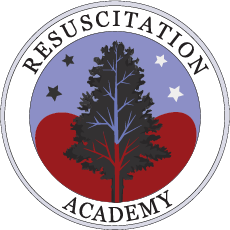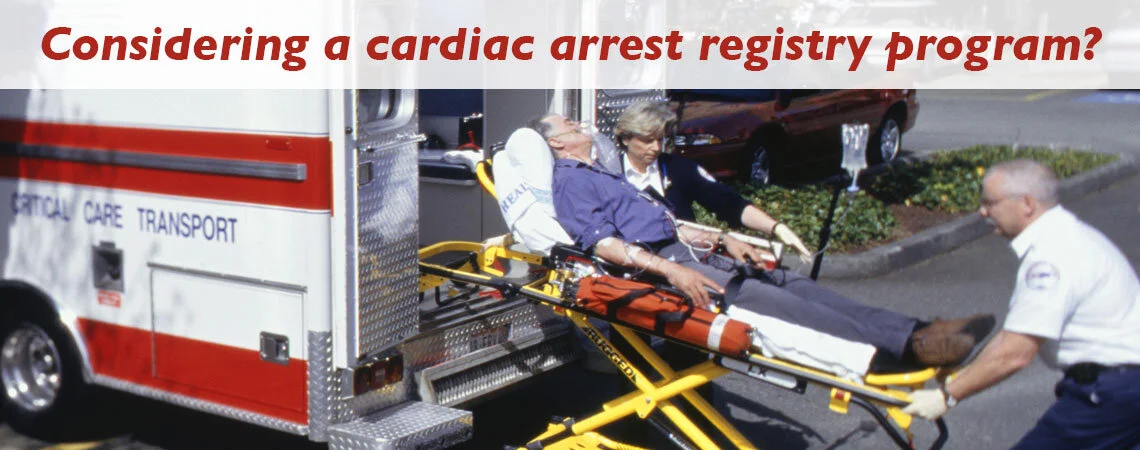Considering a cardiac arrest registry?
Without tracking and measuring results, there’s no way to improve any system — especially when it comes to life-saving cardiac care.
Cardiac arrest registries were developed to help communities measure cardiac arrest outcomes, improve response performance and ultimately save lives. Healthcare professionals rely on the data to benchmark their agency’s performance against local, state and national results, and to inform their training initiatives to improve outcomes.
When EMS transports a cardiac arrest patient to the hospital, they may never know if that patient lives or dies. But a registry reveals the patient’s prognosis, discharge status, neurological outcome and more. It’s a way for you and your team to see your efforts full-circle, with data that can be shared and compared to other communities.
Getting started: 6 tough questions to ask your team
Whether you establish your own system or participate in a national program, a registry plays a vital role in boosting the survival rate in your community. So, it’s important to invest time up front to figure out what approach will best serve your needs — and what your agency is capable of implementing and supporting. Start by asking the following six questions.
#1: Are we doing this for the right reasons?
Too many agencies use a registry because they must — not because they want to. They don’t stop to think about what they’re measuring or why. Data tracking is perceived as just one more to-do, a burden rather than an opportunity. You need people with passion to support your registry. They want to know the numbers because they recognize what those numbers represent — another life saved, a huge difference made in the community. According to the American Medical Association, be sure to engage your entire agency when brainstorming what and how to track. Non-clinical and support staff can be an integral part of developing the infrastructure of the actual registry.[1]
#2: Will we join a national cardiac arrest registry?
Time, money and resources are major factors to consider when deciding on the best course of action. While a national registry may not be feasible for every agency, they offer a number of benefits like these:
HIPAA-compliant, web-based software to link EMS and hospital data;
Multiple real-time reporting tools like charts, graphs and tables for use in reports, presentations and more;
Training and support from a central coordinator; and
Benchmarking capabilities so you can compare your performance and identify areas for improvement.
#3: Do we have the resources for compiling and tracking data?
Whether you’re part of a national program or going it alone, accurate data collection takes time and dedication. Be prepared to commit manpower to gather the data, enter it in the registry, analyze it and distribute reports. Think through how you’ll handle assigning data duties — one person? Rotating assignment? Part-time new hire? — to ensure your registry is as accurate, complete and up to date as possible. If you’re part of a national program, your designated registry coordinator would also serve as the point of contact with your state’s registry coordinator.
#4: Are we equipped with the right tools to gather data?
Electronic data collection provides immediacy and accuracy, but hardware requires an upfront investment if you don’t already own computers. Fast, reliable internet access is ideal, but can be an issue in rural or remote areas. Be creative and use what you have to get the job done — an excel spreadsheet, paper forms, even handwriting in a notebook if that works for you. Keep in mind that the manual approach has its limitations. Handwritten registries are more often prone to illegible or uninterpretable responses. Keying handwritten data into a spreadsheet is subject to transcription errors and can present an unnecessary administrative burden.[2]
#5: Which variables will we track?
When it comes to tracking cardiac arrests, certain variables are critical to capture, while others are nice to have but not vital. According to Jenny Shin, MPH, CARES Program Manager for the Pacific Northwest, top-line Utstein Survival Report variables are a great place to start: Resuscitations attempted Trauma/non-traumatic etiology Witnessed or unwitnessed Initial rhythm Shockable vs. non-shockable Number of survivors “Focus on what’s most important to your community, especially if you’re a smaller agency,” counsels Shin, “for example, the number of survivors year over year. CARES data is publicly available, so you can see if your results are above or below the national average.” (Download CARES Measure & Improve resources for quality improvement.)
#6: How can we close the loop on outcomes?
With a national registry, patient outcomes are generally received automatically. But there are steps you can take to help close the loop with hospitals to discover patient outcomes — to a certain point. For the most part, EMS agencies and medical directors have established relationships with local hospitals. Though the burden’s on your agency to ask, you might be surprised how quickly a hospital will provide outcomes data, especially when they understand why you’re asking. Keep in mind HIPPA protections may make some information difficult to obtain.
Your improvement strategy starts with a registry
Measure. Improve. Whether you’re partnering with a program like CARES or going solo, moving the needle starts with the tracking of accurate data. Going into it with an informed understanding of the process — and the pitfalls — will help your agency and your community start reaping the benefits sooner rather than later.
The Resuscitation Academy
SOURCES
[1] [1]Implementing a Point-of-Care Registry, Bruce Bagley, MD, American Medical Association, https://www.stepsforward.org/modules/point-of-care-registry.
[2] Gliklich RE, Dreyer NA, Leavy MB, editors. Rockville (MD): Agency for Healthcare Research and Quality (US); 2014 Apr.











There are opportunities to significantly increase survival from out of hospital cardiac arrest. Implementation of existing standards and training programs for telephone CPR and high-performance CPR will do much to improve survival.